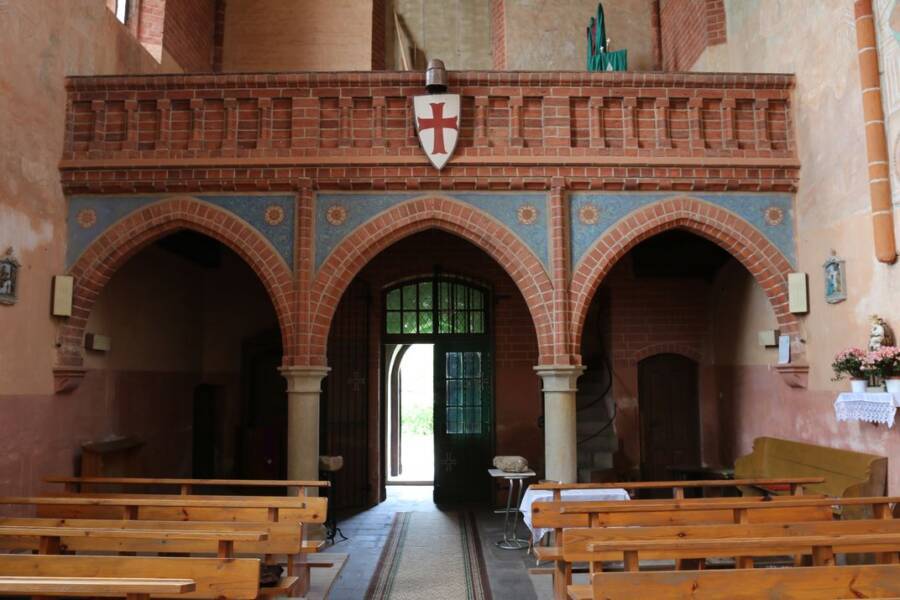The Quest For The Holy Grail

Wikimedia CommonsInside the chapel of St. Stanislaus.
The chapel of Saint Stanislaus in Chwarszczany, Poland has long been a place of fascination. Constructed during the 13th century, this chapel was already known to be built by the Knights Templar. But a recent discovery has unearthed new revelations — and sparked new questions.
In 2020, news spread that a secret crypt had been found beneath the church’s floor. And this crypt might be safeguarding the Holy Grail. While the latter has yet to be proven, researchers did make some impressive archaeological discoveries there: the remains of numerous Knights Templar.
This mysterious group of Catholic warriors has intrigued historians for centuries. Formed in 1119 as the Christian Crusades ravaged the Middle East, the troupe was created to protect pilgrims traveling east. They left traces all over Europe, even in seemingly simple churches like this.
Although archaeological work began at the site in 2004, it was only with the aid of ground-penetrating radar (GPR) that the excavation team managed to detect the secret passageways below the ground. Since the Knights Templar were said to have been keepers of the Holy Grail — the Cup of Christ used during the Last Supper — these passageways may have potentially been a good hiding place for such a valuable item.

Wikimedia CommonsThe chapel in Chwarszczany was built by the Knights Templar in 1232.
“Our GPR has detected gothic crypts with the remnants of Templar Knights beneath the chapel,” said lead archaeologist Przemyslaw Kolosowski. “According to legends and medieval documents, there was a well in the vicinity of the chapel. Rumor has it that the well served as an entrance to a secret tunnel.”
The West Pomeranian village is a fairly quaint locale, but GPR suggested something more was going on beneath its foundations. It was an exciting moment for researchers, especially since there’s a legend to consider here.
“The legend says that Templars, under cover of darkness, sunk a wooden box with golden coins and the Holy Grail [into a since-dried lake mentioned in the stories],” said local historian Marek Karolczak, “and the treasure has either been stolen or lost forever in the swamp.”

Wikimedia CommonsA depiction of the Knights Templar being burned at the stake.
The most promising leap came in the form of a small depression within the church itself. Studying this area revealed seven vaulted crypts. Since the Templars built this church in 1232 and used it as “both a place of worship and a defensive fortification,” the remains likely belonged to Templar members. Though some involved claim these crypts “cannot be dated back to Templar times,” the debate is ongoing.
Furthermore, the team found yet another tunnel beneath the town of Myślibórz, which is only about a half hour away from Chwarszczany. That said, it’s worth noting that the Cup of Christ has yet to be found within this sprawling network of passageways.
But the quest may be closer to completion than ever before.





